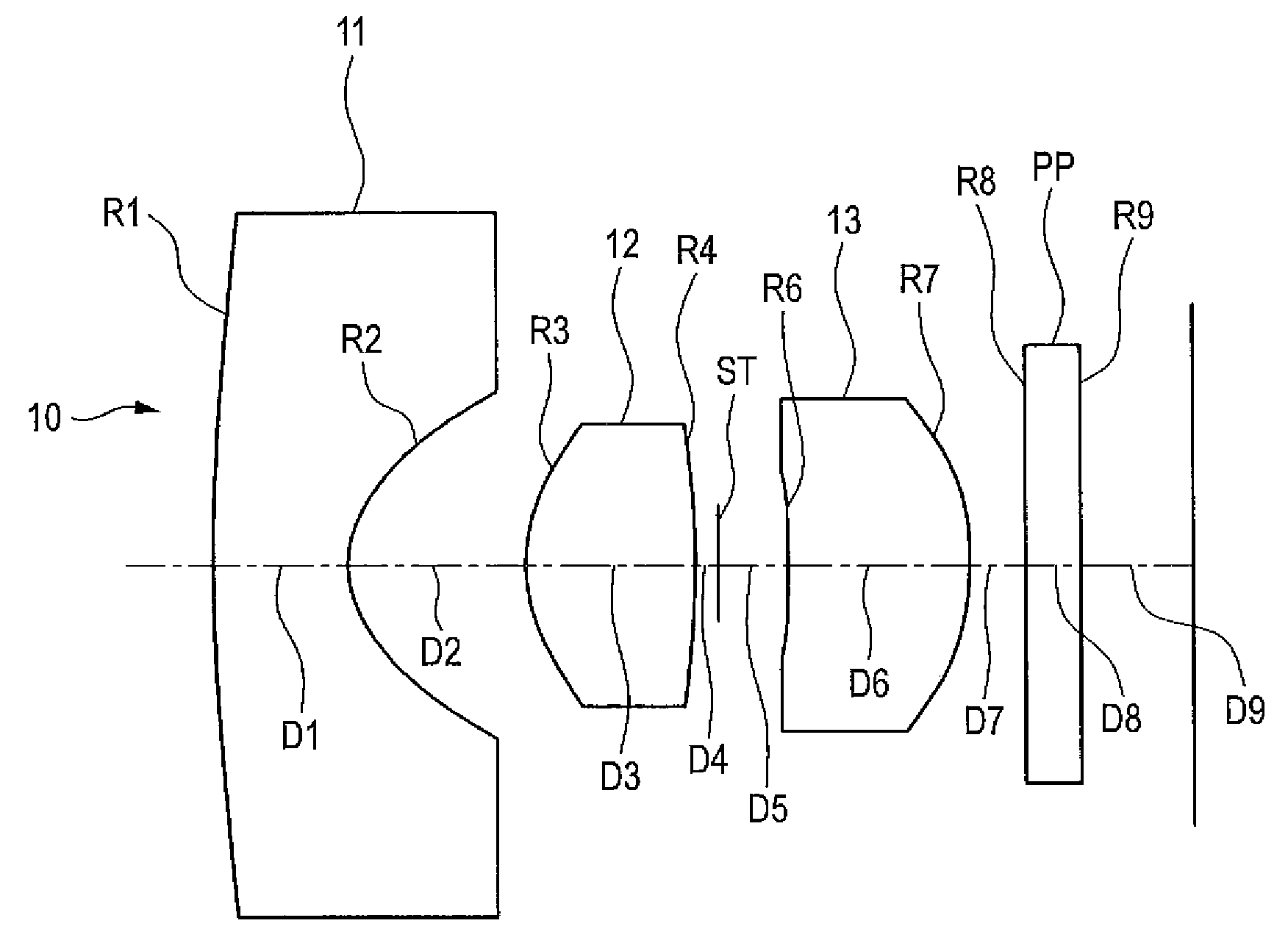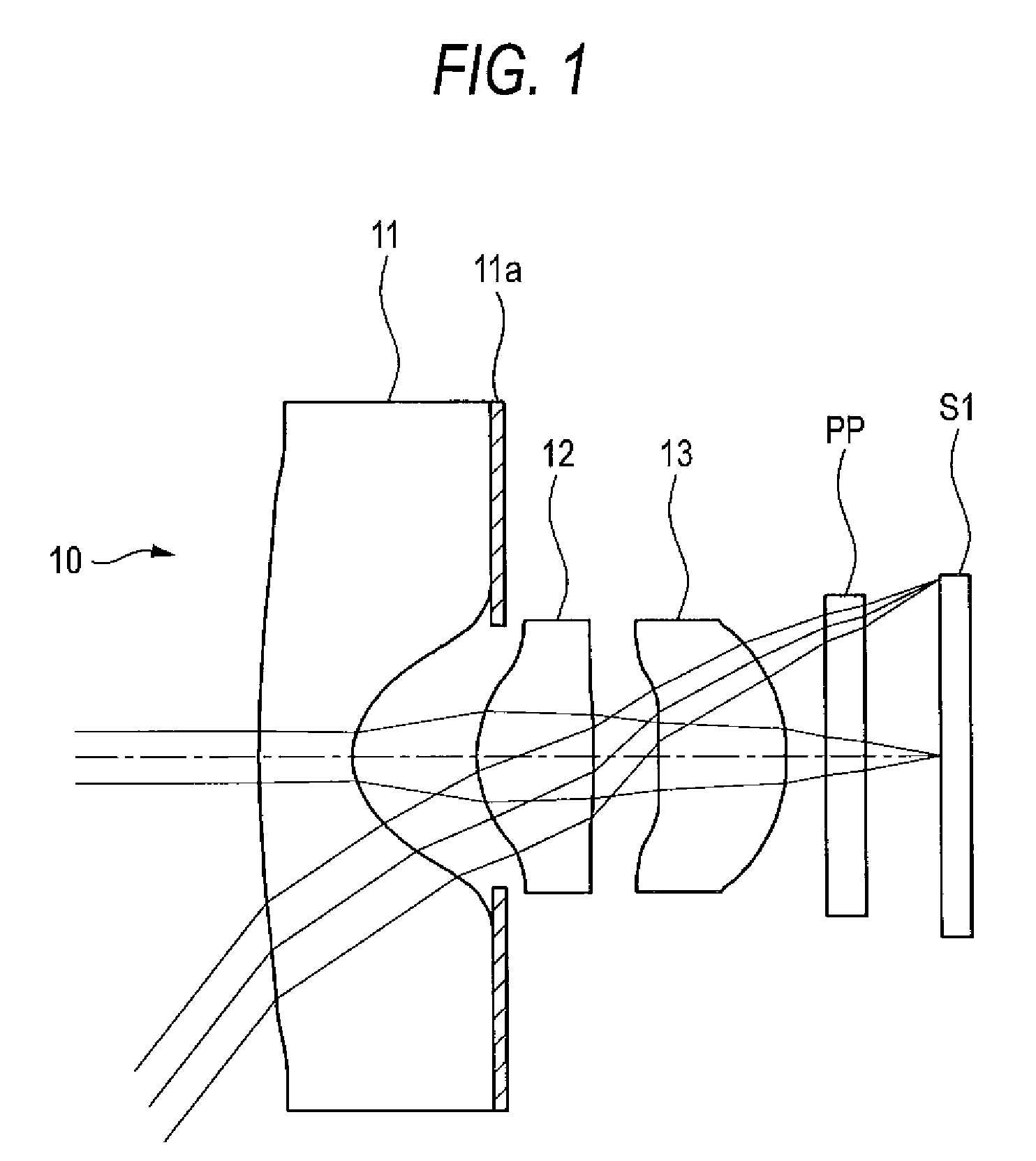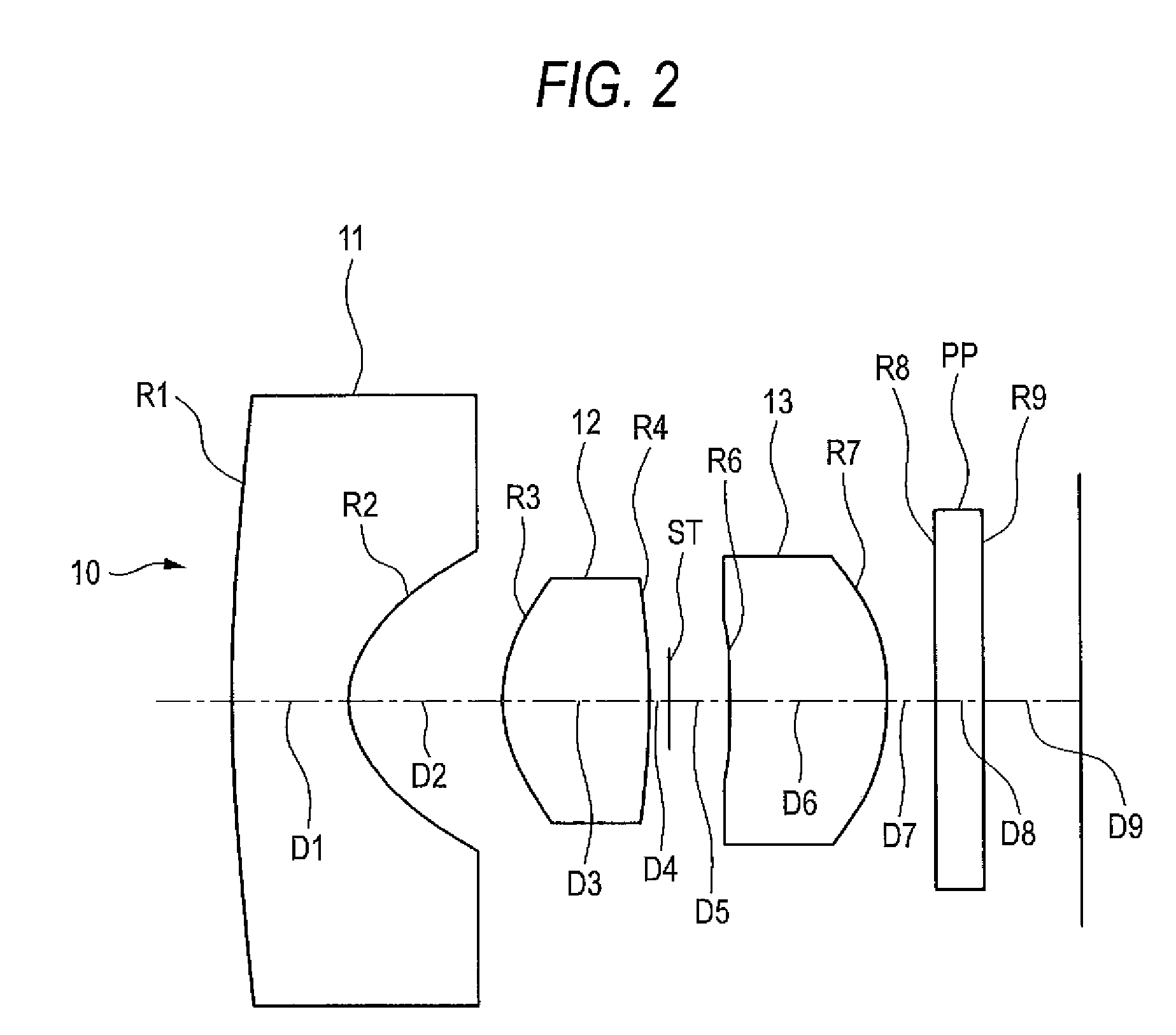Imaging lens and camera apparatus
a technology of imaging lens and camera body, applied in the field of imaging lenses, can solve the problems of insufficient miniaturization, high cost, and insufficient imaging lens, and achieve the effects of reducing size, weight, cost, and excellent optical performan
- Summary
- Abstract
- Description
- Claims
- Application Information
AI Technical Summary
Benefits of technology
Problems solved by technology
Method used
Image
Examples
example 1
[0040]Referring to FIGS. 1 and 2, the imaging lens 10 includes sequentially from the object side a first lens 11, a second lens 12, and a third lens 13. Each of the first to third lenses 11 to 13 is configured by a bi-aspherical plastic lens having aspherical surfaces which are rotationally symmetric about the optical axis. The first lens 11 has a negative refractive power and has a meniscus shape where a convex surface is on the object side, a concave surface is on the image side, and the absolute value of the radius of curvature of the image-side surface is smaller than that of the object-side surface. A light shielding film 11a is disposed on a region outside the image-side concave surface of the first lens 11. The light shielding film 11a prevents light from entering from the outside of the effective diameter, and a ghost image from appearing on the image plane. The light shielding film 11a is a layer of an opaque coating composition which is disposed outside the effective diame...
example 2
[0048]Referring to FIG. 4, an imaging lens 20 includes sequentially from the object side a first lens 21, a second lens 22, and a third lens 23. Each of the first to third lenses 21 to 23 is configured by a bi-aspherical plastic lens. The first lens 21 has a negative refractive power and has a meniscus shape where a convex surface is on the object side, a concave surface is on the image side, and the absolute value of the radius of curvature of the image-side concave surface is smaller than that of the object-side surface. The second lens 22 has a bi-convex shape where each of the object and image side surfaces is a convex surface, and the absolute value of the radius of curvature of the object-side surface is smaller than that of the image-side surface. The third lens 23 has a positive refractive power and has a meniscus shape where a concave surface is on the object side, a convex surface is on the image side, and the absolute value of the radius of curvature of the image-side con...
example 3
[0053]Referring to FIG. 6, an imaging lens 30 includes sequentially from the object side a first lens 31, a second lens 32, and a third lens 33. Each of the first to third lenses 31 to 33 is configured by a bi-aspherical plastic lens. The first lens 31 has a negative refractive power and a meniscus shape where a convex surface is on the object side, a concave surface is on the image side, and the absolute value of the radius of curvature of the image-side concave surface is smaller than that of the object-side convex surface. The second lens 32 has a bi-convex shape where each of the object and image side surfaces is a convex surface, and the absolute value of the radius of curvature of the object-side surface is smaller than that of the image-side surface. The third lens 33 has a positive refractive power and a meniscus shape where a concave surface is on the object side, a convex surface is on the image side, and the absolute value of the radius of curvature of the image-side conv...
PUM
 Login to View More
Login to View More Abstract
Description
Claims
Application Information
 Login to View More
Login to View More - R&D
- Intellectual Property
- Life Sciences
- Materials
- Tech Scout
- Unparalleled Data Quality
- Higher Quality Content
- 60% Fewer Hallucinations
Browse by: Latest US Patents, China's latest patents, Technical Efficacy Thesaurus, Application Domain, Technology Topic, Popular Technical Reports.
© 2025 PatSnap. All rights reserved.Legal|Privacy policy|Modern Slavery Act Transparency Statement|Sitemap|About US| Contact US: help@patsnap.com



